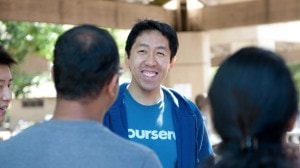By Hari Subramaniam
Virtual treatment and data collection were critical during the COVID-19 epidemic, when both patients and clinicians were unable to visit hospitals in the traditional sense.
The lively startup culture in India, as well as urban adoption of cutting-edge technologies like cloud computing and artificial intelligence, have fueled the expansion of health technology businesses in the country (AI). These inventive enterprises improve medical treatments by combining tried-and-true practices with these state of the art technology. Telemedicine and Internet-delivered healthcare services are helping these companies flourish in India.
A digitally transformed, intelligent healthcare system delivers a unified, patient-centred experience that improves patient outcomes, increases productivity and revenue, and reduces environmental impact. Our healthcare system must do more with less resources, which may be achieved by investing in smart infrastructure and using technology.
Because they give new ways to connect and share data, as well as operational benefits, the Internet of Things (IoT) and artificial intelligence (AI) have become widespread forces in business. It’s a brilliant idea for medicine, where the Internet of Things (IoT) and Remote Patient Monitoring (RPM) are colliding to transform the fundamental concept of care. The development of reliable biosensors promises to revolutionise healthcare and the way people live in the future by providing more information about their health. Remote patient monitoring assists clinicians by improving clinical knowledge of patients’ state between office visits and providing tools to promote proactive care delivery. A practitioner may use RPM to observe how a patient’s symptoms vary over time, enabling them to discover patterns and adjust the patient’s treatment as needed.
The cost of providing treatment to a patient online is cheaper than the cost of providing care in a traditional setting. When a corporation applies RPM, net patient revenue may increase as a consequence of increased process efficiency, increased employee productivity, and lower administrative expenses. RPM also allows for remuneration and a competitive edge.
Patients may get treatment regardless of their location or time of day with the help of remote patient monitoring. It allows patients in remote locations to be connected with the relevant expertise. It’s also a great way to cut down on appointment no-shows.
The use of remote patient monitoring, which provides doctors with near real-time status information, allows them to more efficiently prioritize treatment delivery. To save paperwork, certain RPM technologies may interface with the provider’s electronic medical record. By enabling physicians to conduct a part of treatment online, RPM may help alleviate the pressure of overbooked in-person sessions in the face of severe staffing shortages. A provider-friendly approach to team-based care is required.
This technology also contributes to the prevention of disease transmission. Patients may avoid potentially infectious hospital and clinic situations by utilising RPM. Those at higher risk of infection, such as the elderly, chronically sick people, pregnant women, and those with impaired immune systems, are protected from this risk by avoiding direct contact with others.
Remote monitoring allows for the detection of complexity and changes occurring in real time with the patient and for action to be taken at the proper time to save the patient. To accomplish so, healthcare organizations must have the necessary resources, experience, and cutting-edge technology.
Remote patient monitoring benefits both doctors and patients by expanding communication options, therefore strengthening the patient-provider bond and improving patient loyalty. It provides patients with the comforting idea that their doctor is always monitoring them, making RPM a clear and consistent winner for patients, caregivers, providers, and prayers throughout the industry.
(The author is a Founder & Director, LifeSigns. The article is for informational purposes only. Please consult medical experts and health professionals before starting any therapy, medication and/or remedy. Views expressed are personal and do not reflect the official position or policy of the FinancialExpress.com.)







